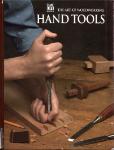/
Author: Becksvoort Ch.
Tags: construction furniture
Text
Graduated Drawers
The Shakers were among the pri-
mary proponents (and practitioners)
of graduated drawers, although there
are lots of cases—Chippendale, Federal and
Queen Anne—that have graduated drawers.
Under the dictum “a place for everything
and everything in its place,” the Shakers
built drawers to house specific items.There
is no reason for a drawer that will hold cas-
sette tapes to be as deep as one that holds
CDs, or for your underwear drawer to be as
high as your sweater drawer.
Also, I never build solid wood drawers
much more than 9 in. high. Because of sea-
sonal wood movement, anything higher
will leave too wide a gap in midwinter
(even with overlay drawers), and the drawer
could bind in summer.
Another consideration is overall propor-
tion. Small drawers in desks or in a collec-
tor’s cabinet may graduate in only %-in. to
%-in. increments. In bureaus used for cloth-
ing, on the other hand, the drawers can be
graduated in X-in. or 1-in. increments. If
BY CHRISTIAN
BECKSVOORT
A Case with an
Even Number of Drawers
The formulas for the example here-а four-drawer
chest with 1 -in. graduations-can be used for any
chest with an even number of drawers.
To get the usable drawer height, subtract the di-
mensions of the top (1 % in.), base (5% in.), and
drawer dividers (3 x % in. = 2% in.) from the
chest's total height (36 in.):
36 - (1 % + 5’4 + 2%) = 27
To find the average drawer height, divide the
usable drawer height (27 in.) by the number of
drawers (4):
27 + 4 = 654
To find the height of the drawer below the middle
divider, add one-half the graduation increment-
1 /2 in.-to the average drawer height (624 in.):
'/ + 654 = 7'4
Add 1 in. to the drawer height below and sub-
tract 1 in. from the two above.
89
A Case with an Odd
Number of Drawers
A case with an odd number of drawers
has a middle drawer with an equal
number of drawers above and below
it. The method of determining the
average drawer height is the same as
for a case with an even number of
drawers. The formulas for the exam-
ple here—a seven-drawer chest with
1 -in. graduations—can be used for
any chest with an odd number of
drawers.
To get the usable drawer height,
subtract the dimensions of the top
(5% in.), base (6% in.) and drawer
dividers (6 x % in. = 4% in.) from the
chest’s total height (59% in.):
59 % - (5% + 6% +4%) = 42%
To find the average drawer height,
divide the usable drawer height
(42% in.) by the number of drawers (7):
42% -5-7 = 6%
For the drawers below the middle
drawer, increase the drawer heights
in 1-in. increments. For the drawers
above the middle drawer, decrease
the drawer heights in 1-in. increments.
you are a stickler for detail, you may also
want to consider graduating the size of the
knobs or drawer pulls as well.
Find the Usable Drawer
Height, then Figure the
Average Drawer Height
Once you know the height of the case and
the number of drawers in the case, laying
out graduated drawers is straightforward. To
get the available drawer space, subtract from
the total height the dimensions of the top,
bottom and all of the dividers. The number
of dividers in a case will always be one less
than the number of drawers: e.g., a five-
drawer case will have four dividers. Dividing
the available drawer space by the number of
drawers will give you the average drawer
height. Regardless of whether you’re build-
ing a case with an odd number or even
number of drawers, the average drawer
height is the most important dimension.
If you have an odd number of drawers,
the middle drawer will be equal to the av-
erage drawer height. For the drawers above,
simply subtract the amount by which you
want the drawers to get smaller—the grad-
uation interval—and add this amount to
the drawers below the middle one.
When figuring drawer graduations for a
case with an even number of drawers, you
still need to find the amount of available
drawer space and calculate the average
drawer height. However, there will be no
average-height drawer in the case when
you are through; the average drawer height
is just the starting point in your calcula-
tions. Determine an average drawer height,
then add or subtract one-half the gradua-
tion increment to or from that average
height to get started.Then proceed by full
graduations.
Always remember that you have some
flexibility. If needed, you can add a fraction of
an inch to the top molding or remove a frac-
tion of an inch from the base to make the
numbers work in a simple way (making your
life a lot easier) without compromising the
chest.You probably can’t change the dimen-
sions of your dividers, though, which Irave to
be a specific size if they are to fit into dove-
tails or dadoes cut with a standard router bit.
The illustrations shown are examples of
how to graduate the drawers for a case with
an even number of drawers and for one with
an odd number of drawers. Here’s an impor-
tant tiring to keep in mind:You can graduate
drawers by any increment—1 in., 2 in., 3 in.,
even fractional inches—as long as you sub-
tract the increment from the drawers above
the average-height drawer and add the in-
crement to the same number of drawers be-
low the average-height drawer. The formulas
can be used for any number of drawers, from
the smallest case with three drawers to a
floor-to-ceiling built-in with 16
CHRISTIAN BECKSVOORT is a contributing editor
to Fine Woodworking magazine.
90 CONSTRUCTION BY DESIGN



